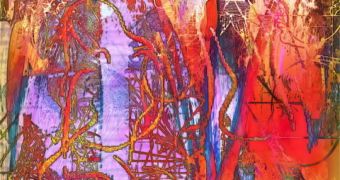Researchers in the UK have managed to discover that the condition know as synaesthesia, which makes sufferers experience a cross-over of perceptions in the presence of a single stimulus, is triggered by genetic factors.
Furthermore, they have been able to also identify the general portion of DNA that is responsible for harboring the genes involved in the condition. This confirms that the ailment is passed on from mother to offspring, although hints to this have existed for a while.
The exact gene or genes that trigger the development have not yet been thoroughly identified, but researcher Julian Asher, from the Imperial College London, working with colleagues from the University of Oxford's Welcome Trust Center for Human Genetics, is sure that identifying them is merely a matter of time.
The main goal of this investigation is to yield the possibility of diagnosing the condition before it kicks off and interferes with a child's education (mostly if that child also suffers from autism). By tracing sets of base pairs in the test subjects' genomes, known as markers, the team was able to conclude which portions of DNA repeated within the family.
For this experiment, they gathered genetic samples from 196 individuals of 43 families, who presented a history of synaesthesia. Of these people, 121 were established to have it, which further boosted the experts' opinion that the condition was indeed handed down from generation to generation.
Another interesting find is that three medical conditions – synaesthesia, autism and epilepsy – actually seem to be related in a way, because they all show up in the same regions of a human chromosome, which suggests that they share an underlying forming mechanism. This would also account for why most synaesthesia cases appear in autistic people, and why some autistic individuals have epilepsy as children.
Basically, synaesthesia is a result of a different wiring inside the brain, and is not necessarily a bad thing. It's just that it's very different from the way normal people perceive stimuli coming from the outside, such as colors, sounds and tastes. "When I hear a violin, I see something like a rich red wine. A cello is more like honey," Asher, who also suffers from the condition, says.

 14 DAY TRIAL //
14 DAY TRIAL //